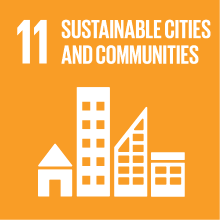SPECIALISED ENGLISH AND MEDIA TRANSLATION
- Academic year
- 2021/2022 Syllabus of previous years
- Official course title
- TRADUZIONE INGLESE SPECIALISTICA E PER I MEDIA
- Course code
- LM7380 (AF:333309 AR:180352)
- Teaching language
- Italian
- Modality
- Blended (on campus and online classes)
- ECTS credits
- 6
- Degree level
- Master's Degree Programme (DM270)
- Academic Discipline
- L-LIN/12
- Period
- 1st Semester
- Course year
- 2
- Where
- TREVISO
- Moodle
- Go to Moodle page
Contribution of the course to the overall degree programme goals
Building on the knowledge and competences acquired in the previous academic year, the course aims to strengthen students’ ability to carry out IT vs EN contrastive linguistic analysis and to apply the findings to audiovisual translation.
Expected learning outcomes
By the end of the course, students will have acquired knowledge of:
- key concepts relating to multimodality and multimediality
- the stylistic differences between texts written to be read vs texts written to be delivered orally, and the differences involved in organising and delivering the information
- relevant theories for multimodal analysis
- theory and practice of audiovisual translation (subtitling)
Applying knowledge and competences
By the end of the course, students will be able to:
- analyse multimodal and multimedia texts, focussing on meaning-making resulting from the combination and interaction of the different semiotic resources
- rewrite texts depending on the medium used for information delivery (written vs oral)
- apply relevant theoretical knowledge to audiovisual translation
- carry out linguistic analysis aimed at identifying translation problems
- solve translation problems in multimodal texts by appropriately applying translation strategies and techniques
- use software for creating/translating subtitles
Making judgements
By the end of the course, students will be able to:
- appropriately select strategies and techniques
- justify and self-evaluate their own translation choices
Communication skills:
By the end of the course, students will be able to:
- use the relevant metalanguage in contrastive analysis and evaluation of translation strategies
- communicate their own observations on contrasting features of the two languages involved, as well as translation strategies, both in the classroom and in the e-learning dedicated space
Learning skills:
By the end on the course, students will be able to critically consult the relevant bibliographic resources.
Pre-requirements
Although no certificate in Information Technology is required, for successful learning and training the following skills are necessary:
- a very good mastery of Microsoft Office Word and Microsoft Office Powerpoint
- a very good mastery of Web-based research tools.
Students who do not possess sufficient IT skills will need to acquire them on their own.
Contents
Part 1 – Intersemiotic translation
- Stylistic differences between texts written to be read and texts written for oral delivery
- Contrastive analysis of audio guides in Italian and in English at the macro level (structure, content types) and micro levels (verbal and non-verbal language)
Part 2 – Audiovisual translation (subtitling)
- Theory and practice of subtitling
- Main software for subtitling
- Practical activities: EN>IT subtitling
Referral texts
The following textbooks are recommended:
- Fina, Maria Elisa. 2018. Investigating Effective Audio Guiding. A Multimodal Comparison of the Genre in Italian and English. Roma: Carocci.
- Perego, Elisa. 2005. La traduzione audiovisiva. Roma: Carocci.
- van Leeuwen, Theo. 1999. Music, Sounds. London: Macmillan.
Students may choose any paper or electronic dictionary.
Recommended monolingual online dictionary: Longman Dictionary of Contemporary English
Assessment methods
More specifically:
- Tesina 1: final assignment involving intersemiotic translation from Italian into English in the field of cultural heritage promotion; more specifically, students are required to create an audio guide or video guide script in English starting from an Italian source text written to be read.
The Italian source text to be intersemiotically translated will be provided by the lecturer (choice of two). The assignment must also include a commentary in which the approach and strategies adopted are illustrated by referring to the theoretical background acquired during the course (further details will be provided during the course)
- Tesina 2: final assignment involving subtitling a video documentary from English into Italian (further details will be provided during the course). The video to be subtitled will be provided by the lecturer.
- Oral exam: powerpoint presentation (around 20-30 minutes depending on whether students have worked individually or in group), in which students will illustrate the approach and strategies adopted in the subtitling assignment (‘Tesina 2’). Indications on how to structure an academic presentation will be provided during the course. After the presentation, discussion on both Assignment 1 and Assignment 2 will follow.
Assessment criteria:
1. translation quality
2. ability to select appropriate strategies and techniques adopted in translation
3. ability to motivate the translation choices
The activities/assignments that will be indicated on the e-learning Moodle course on a weekly basis are compulsory for ALL students in order to access the exam. Students are allowed to work in groups of max. 4 students. In this case, the same mark will be assigned to all members of the group.
Type of exam
Teaching methods
The course will be held mainly in English and will consist in both lecture-based and interactive classes. For learning purposes, students are required to actively participate in the exam practice activities and discussions, both in the classroom and in Moodle.
All students (including non-attendees) are required to sign up to the Moodle course that will be indicated by the lecturer (the link will be published on the lecturer’s personal unive webpage) and, for exam preparation, refer to the materials and activities that will be uploaded in Moodle on a weekly basis.
Further information
2030 Agenda for Sustainable Development Goals
This subject deals with topics related to the macro-area "Cities, infrastructure and social capital" and contributes to the achievement of one or more goals of U. N. Agenda for Sustainable Development


